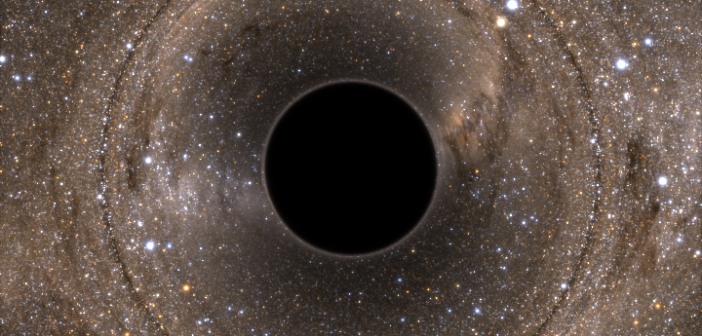Wandering supermassive black holes — those that don’t lie at their galaxies’ centers — may be tricky to find, but not all black holes that wander are lost! A new study demonstrates how we can hope to discover these missing nomads in the future.

When two galaxies collide, the resulting galaxy will contain multiple supermassive black holes. [NASA/Hubble Heritage Team (STScI)]
When Galaxies Collide
We know that the center of every massive galaxy hosts a supermassive black hole weighing millions to billions of solar masses. But galactic centers aren’t the only place that supermassive black holes can lurk! In fact, we expect that the majority of galaxies host many more of these monsters beyond just the central supermassive black holes. Why? Because galaxies merge.
Structure in our universe is largely built hierarchically: over time, galaxies have frequently collided with each other, growing progressively larger with each merger. But with each of these mergers, at least two supermassive black holes — one from each of the merging galaxies — are introduced into the resulting turmoil.
While gas and stars reorder themselves neatly into a new galaxy, eventually erasing all evidence of the merger, the black holes aren’t as well-behaved. Indeed, simulations show that it can take billions of years for those supermassive black holes to make their way to the center of the newly formed galaxy and merge — if they even make it at all!

This extreme example shows a simulated galaxy whose halo contains dozens of black holes (circled) above a million solar masses, including five (orange circles) shining with a bolometric luminosity above 1042 erg/s. The galaxy’s stars (top) and gas (center) show no evidence of the past mergers that led to this accumulation of black holes. The simulated X-ray image of the galaxy (bottom) reveals the five brightest black holes. [Adapted from Ricarte et al. 2021]
Revealing a Hidden Population
Ricarte and collaborators use a suite of cosmological simulations called ROMULUS to produce a realistic expectation of the black holes lurking in our universe. These simulations carefully track the positions and dynamics of supermassive black holes as galaxies merge and evolve over time, allowing us to explore the population of wandering supermassive black holes predicted to arise in galaxies at different times in the universe.
From this simulated population, the authors then predict the ways in which these wanderers may betray their locations:
- Hyperluminous X-ray sources
Some nearby, accreting, wandering black holes should be detectable as exceedingly bright X-ray sources. - Dual active galactic nuclei
The simulations predict that galaxies will often host more than one dramatically accreting supermassive black hole — particularly at higher redshifts. - X-ray halo
If the black holes are too distant or dim to resolve individually, we can identify wanderers by stacking images of galaxies of similar mass. The “halo” of excess X-ray radiation can then be used to describe the wandering black hole population. - Tidal disruption events
Wandering supermassive black holes can tear apart stars that come too close! These disruptions should produce transient signals offset from galactic centers.
The ROMULUS simulations show that, for black holes smaller than 10 billion solar masses, wanderers greatly outnumber the central supermassive black holes in our universe. Ricarte and collaborators’ work demonstrates that we’ll need to consider this nomadic population carefully as we analyze our observations of the universe.
Citation
“Unveiling the Population of Wandering Black Holes via Electromagnetic Signatures,” Angelo Ricarte et al 2021 ApJL 916 L18. doi:10.3847/2041-8213/ac1170
